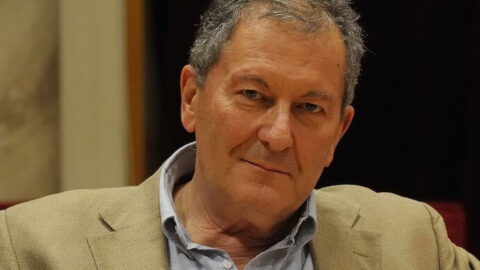Petr Kotik is the founder and artistic director of the biennial Ostrava Days which includes a three-week compositional institute (August 10-29, 2015) and a nine-day festival of avant-garde music (August 21-29). The works of emerging composers are performed as equals alongside established new music composers, transforming a small Czech Republic town known for its coal and steel into a hub for new music and avant-garde masterpieces.
Your summer Institute is growing rapidly– this year you’re hosting 35 emerging composers from all over the world. What originally inspired the program?
Just prior to Ostrava Days, I was invited to a similar educational event that lasted a little more than a week, and I noticed a big problem: when all of us started to get to know each other, we dispersed. I thought this didn’t make any sense. Music happens in one-on-one relationships. This is why the Ostrava Days Institute lasts three weeks. In 1990, I was asked to organize an educational project in Prague, and I wanted to involve John Cage and he told me – “When you do it, Petr, be sure you have a good place for everyone to sit and eat together.” Cage referred to his time at Black Mountain College: there, students learned something in classes, but then Cage said, sitting together at meals was where they learned the most! This is what we strive towards in Ostrava.
Why are you doing this project in Ostrava?
Ostrava is an ideal place. The city is not small, but it’s not big either. It has all the venues and all the necessary resources to do very significant events– from the opera house to the large symphony orchestra. You don’t have to call all of Europe to import a violinist if you need one. And Ostrava doesn’t have tourists. You’re not bothered by tourists there. There’s nothing to look at [in Ostrava], wonderful! You feel that you are really in the Czech Republic.
Who attends the festival, then?
We have brought up a generation of [local] people who come to our concerts and understand and support the music we do. They’re quite sophisticated by now, because they have 15 years of experience listening … We did [Cage’s] “Europera 5” to a packed opera house and you could hear a pin drop. At the end, there was a standing ovation! And you know, it’s Ostrava; not some kind of adjacent avant-garde scene– it’s a [local] scene. There are also a lot of people who come from outside– 5 million people are living in the 30-mile radius. I had done some talks at a school in Poland, just across the border about a 20-minute drive from Ostrava, and this professor tells me “I know you, I never miss a single concert of yours.”

The festival focuses on presenting both orchestral and large-scale ensemble works. Why do you emphasize that difference?
There is a big mistake in thinking that an orchestra is like an enlarged ensemble. It’s a completely different thing. An ensemble is like a group of friends who decide to build a barn. They discuss what to do– they decide to work until the end of the day when there is still light, they work together, that’s an ensemble. An orchestra is a construction crew that is building a skyscraper, they have their hard hats, they have to come at certain time, there’s no discussion about what to do. I was never interested in the orchestra, until I formed this enormous 86-piece orchestra to do a tribute to Cage at Carnegie Hall. I practiced with everyone separately, we had rehearsals for 2 months … imagine 86 people playing a John Cage orchestra piece where everybody knows exactly what to do and they do it right. And conducting this group for two hours changed my life.
Your experimental opera based on text by Gertrude Stein is being performed this year at the festival. What compelled you to compose this opera?
I am, you know, a working composer. I was asked to do a piece for a singer, and I conceived of a piece for soprano and violin. And when we did the first NODO festival in Ostrava [New Opera Days Ostrava] in 2012, the Ostrava opera director said “We should do an opera of yours next time!” I instantly thought I could develop this idea with soprano and violin. I found a text, and I worked one year to create a libretto. That was the most difficult part. I don’t have a practical explanation why I work with Gertrude Stein. You’re driven by your intuition which you cannot explain… Once I did the libretto, I composed this piece for soprano and violin, and then I added three male voices, and then percussion, oboe, trumpet, and cello. We have three narrators to introduce the different texts written by Stein in 1943 during the war. That’s essentially the story of the opera. And as with everything, you start something, and if it doesn’t bomb out, then you continue, until it all gets finished.
























